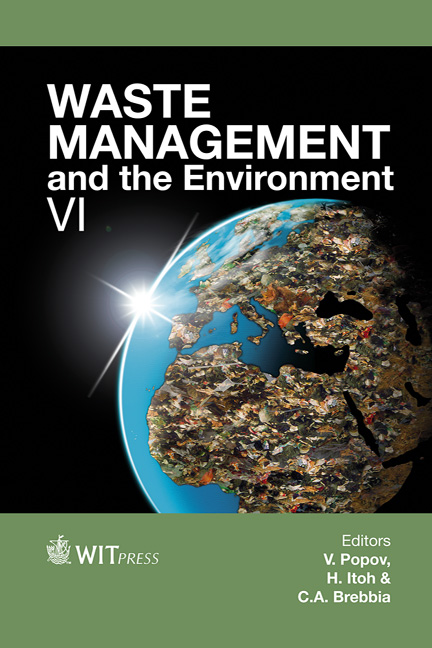Removal Of Cadmium From Waste Water Using Saudi Activated Bentonite
Price
Free (open access)
Transaction
Volume
163
Pages
12
Page Range
391 - 402
Published
2012
Size
404 kb
Paper DOI
10.2495/WM120351
Copyright
WIT Press
Author(s)
S. S. Al-Shahrani
Abstract
Application of Saudi activated clay (bentonite) to remove cadmium from wastewater was investigated. Natural local clay which was obtained from Khulays bentonite deposit was selected and activated using sulfuric acid to increase its adsorptive capacity. The removal characteristics of cadmium ions from wastewater were investigated under various operating variables such as contact time, initial metal concentration, clay dosage and solution pH. Batch scale equilibrium adsorption was carried out for a wide range of initial metals concentration. The results showed that the sorption of cadmium ions on Saudi activated clay was relatively fast and the equilibrium was achieved after only 20 min. The sorption data suggests that solution pH was the most important parameter in controlling cadmium sorption onto bentonite. They also showed that increasing the initial cadmium concentration decreased cadmium removal percentage due to the saturation of clay with cadmium ions. Furthermore, the adsorption of cadmium increased with increase in solution pH. The adsorption isotherm data were well fitted with both the linearized Langmuir and Freundlich models. Keywords: cadmium removal, Saudi bentonite, cadmium adsorption, heavy metals removal, adsorption isotherm, adsorption kinetic. 1 Introduction Heavy metals wastewaters are directly or indirectly discharged into the environment excessively in many countries. Heavy metals are not biodegradable as organic contaminants and may accumulate in living organisms. Many heavy metal ions are known to be toxic or carcinogenic such as cadmium [1]. Cadmium
Keywords
cadmium removal, Saudi bentonite, cadmium adsorption, heavy metals removal, adsorption isotherm, adsorption kinetic.





